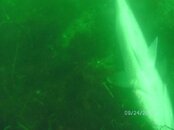You still don't get it?
I get it... you can lose all your gas in manifolded doubles - if you have a failure of some sort & don't close any valves.
That's like saying your car will crash if you don't step on the brake pedal.
Welcome to ScubaBoard, the world's largest scuba diving community. Registration is not required to read the forums, but we encourage you to join. Joining has its benefits and enables you to participate in the discussions.
Benefits of registering include
You still don't get it?
Manifolded Doubles = Dinosaur.
Independent Doubles = Stroke.
Sidemount = Cool.
Why is it that I never see the sidemount config. criticized for not being able to access all the divers air after a reg malfunctions, only the ID's? Is there some magic I'm not aware of that allows a diver access to all remaining air in the sidemount config after reg failure?
Could it be that SM is the latest and the greatest and new gear to sell? And wasn't side mount started for cave diving? Seems a little odd to me since a diver can't access all remaining gas after a reg malfunction with side mount.
If you really wanted to and had a 3rd tank to breathe off for a minute or two, you could swap regs underwater, although it would require service later.
The advantage of sidemount is that, if your problem lies in the regulator, you can feather a valve and still have access to the gas in that tank, which is not really very feasible if the valve is on your back. Obviously, a tank neck o-ring or valve problem can lose you all the gas in one tank, but that's true with sidemount, IDs, or MDs.
The big reason for having the tanks on your back is that they are connected to one another, and it's hard to do that any other way. If you aren't going to connect them, having them where you can't reach the valves easily just seems like an odd choice.
I make that criticism as a matter of course in these discussions.
A lot of the talk of 'feathering valves' and 'swapping regs underwater' is great for the pool, but it really loses its appeal when its game day (deep, dark, silty, on the line, with a primary light, etc etc). A REAL freeflow on a reg drains your tank in a matter of like a minute. Even if you had a full tank (you probably wont), feathering it only buys you a handful of breaths. And a breath-hold while swapping regs is pretty outrageous. Putting a lot off eggs into one basket with that little maneuver.


